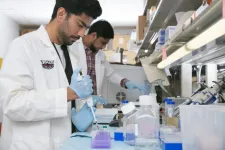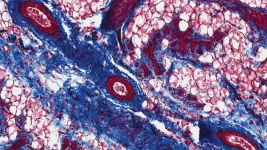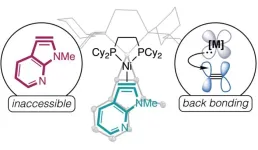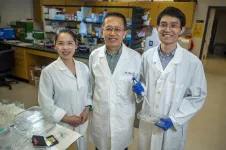Gene signatures from tissue-resident T cells as a predictive tool for melanoma patients
2024-05-02
(Press-News.org)
(LOS ANGELES) – May 2, 2024 - An extensive analytical study conducted at the Terasaki Institute for Biomedical Innovation (TIBI) has revealed an association between favorable survival outcomes for melanoma patients and the presence of higher populations of tissue-resident memory T cells (TRM). Data obtained from this study could be used not only for a TRM-based machine learning model with predictive powers for melanoma prognosis but could also elucidate the role TRM cells can play in the tumor immune microenvironment. This could guide the development of more effective and personalized anti-tumor immunotherapeutic treatment regimens for cancer patients.
The tumor immune microenvironment (TIME) refers to the complex and dynamic interplay between tumor cells, various immune cells, and other cellular and non-cellular components within and surrounding the tumor.
TRM cells are a unique type of immune cells that reside in peripheral tissues and many kinds of cancer types.
Because of the presence and functional properties of TRM cells within the TIME in harnessing their potential for cancer immunotherapy, there has been much interest in studying TRM cells and how they influence patient survival. Key to this understanding is to establish whether the presence and abundance of TRM cells in cancer patients correlate with better patient prognosis. Previous studies conducted with melanoma patients have produced conflicting results. There has also been little effort to conduct a comprehensive study to evaluate the TRM abundance and correlate immunomics data with patient survival outcomes.
The TIBI team sought to solve this problem by turning to data from single-cell RNA sequencing (scRNA-seq), a powerful technology that allows one to obtain a complete genetic profile of large numbers of individual cells. Instead of using a limited number of a cell’s identifying marker genes, utilizing the scRNA-seq technology provides a more comprehensive, accurate, and nuanced way of characterizing a cell’s type and function. From this profile, gene signatures can be generated– uniquely characteristic patterns of a specific immune cell type that can possibly be correlated with the presence of disease.
As described in their recent paper in iScience, the team used this approach on two independent cohorts of melanoma patients' scRNA-seq data and were able to extract 11 distinct gene signatures that highly correlated with TRM abundance in the patients. A solid association was also found between these gene signatures and patient survival outcomes.
Further studies revealed additional positive correlations between TRM abundance and the presence of multiple anti-tumor immune cells in the melanoma TIME, as well as with immune pathways and regulatory genes, suggesting that TRM cells have a crucial role in immunomodulation. The studies also indicated that an abundance of TRM cells results in a more active melanoma TIME and better patient outcomes.
Finally, the TIBI researchers could use the data from their analysis to create a high-precision TRM-derived risk scoring system to classify patients into high- and low-risk prognostic categories for melanoma patients.
“Our scientists’ analytical approach and discoveries about the role that TRM cells play may help to refine and more accurately assess cancer patients’ response to immunotherapeutic drugs,” said Ali Khademhosseini, TIBI’s Director and CEO. “As treatments can have profoundly variable effects on individual cancer patients, this is an important step toward improving patient outcome.”
Authors: Chongming Jiang, Cheng-Chi Chao, Jianrong Li, Xin Ge, Aidan Shen, Vadim Jucaud, Chao Cheng, and Xiling Shen
Grant Information: This work is supported by the National Institutes of Health, USA (NIH) R01 DK119795 and R35 GM122465. This work is was also funded by the Cancer Prevention Research Institute of Texas (CPRIT) (RR180061).
###
About the Terasaki Institute for Biomedical Innovation
The Terasaki Institute for Biomedical Innovation is accelerating the pace of translational research by supporting the world’s leading scientists with an open, entrepreneurial environment for bioengineering new materials, biological models, and advanced technologies to address critical challenges to the health of the planet and its people. The Institute’s worldwide collaborations with academic, clinical, and entrepreneurial partners provide a rich foundation for translating innovations to the real world.
Contact:
Stewart Han
President
Terasaki Institute for Biomedical Innovation
shan@terasaki.org
END
[Attachments] See images for this press release:
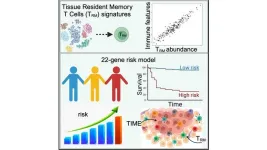
ELSE PRESS RELEASES FROM THIS DATE:
2024-05-02
In recognition of a rapidly growing field, Florida Atlantic University’s College of Engineering and Computer Science (COECS) has created a Department of Biomedical Engineering. The newly established department will focus on three key areas: biomaterials and tissue engineering; smart health systems; and bio-robotics. Biomedical engineering integrates fundamental and practical concepts in electrical and mechanical engineering, biology, computer science and medicine into a cross-disciplinary field focused on improving human health and solving problems in the delivery of health care.
The COECS faculty are already performing ...
2024-05-02
Reporters are invited to join leading nutrition researchers and professionals at NUTRITION 2024, the annual flagship meeting of the American Society for Nutrition. The meeting will bring together thousands of experts from around the globe to share and discuss emerging scientific and policy developments in food, nutrition and public health June 29–July 2 in Chicago.
The meeting program features exciting scientific symposia, award lectures, networking events and more, offering an up-close view into the latest findings, opportunities and debates. More than 1,600 original research studies will be presented ...
2024-05-02
Women’s health is often talked about in terms of major, life-altering events like pregnancy and menopause. A new study from Cold Spring Harbor Laboratory (CSHL) underscores the importance of considering everyday occurrences’ impact on women’s well-being.
CSHL researchers have made a surprising discovery involving urinary tract infections (UTIs). The scientists found that UTIs in mice can provoke a bodily response that results in structural changes in breast tissue. Remarkably, these changes are reversible ...
2024-05-02
MINNEAPOLIS/ST. PAUL (05/02/2024) — For the first time, chemists in the University of Minnesota Twin Cities College of Science and Engineering have created a highly reactive chemical compound that has eluded scientists for more than 120 years. The discovery could lead to new drug treatments, safer agricultural products, and better electronics.
For decades, researchers have been investigating molecules called N-heteroarenes, which are ring-shaped chemical compounds that contain one or more nitrogen atoms. Bio-active molecules having a N-heteroarene core are widely ...
2024-05-02
Four proposed state-of-the art image search engines for automating search and retrieval of digital histopathology slides were found to be of inadequate performance for routine clinical care, new research suggests.
The performance of the artificial intelligence algorithms to power the histopathology image databases was worse than expected, with some having less than 50% accuracy, which is not suitable for clinical practice, said Dr. Helen Shang, a third-year internal medicine resident and incoming hematology-oncology fellow at the David Geffen School ...
2024-05-02
A new study examined the drinking levels and patterns of young adults before, during and after the pandemic. The researchers found alcohol use and alcohol-related problems substantially decreased in heavy-drinking young adults during the pandemic, and these decreases were still evident as the pandemic began to wane. The results are available in the May 2 issue of the journal Nature Mental Health.
“The pandemic gave us a unique opportunity to see how wide-spread mitigation measures like social distancing and bar/restaurant closures may have affected alcohol consumption,” said lead ...
2024-05-02
Northwestern University engineers have developed a new artificial intelligence (AI) algorithm designed specifically for smart robotics. By helping robots rapidly and reliably learn complex skills, the new method could significantly improve the practicality — and safety — of robots for a range of applications, including self-driving cars, delivery drones, household assistants and automation.
Called Maximum Diffusion Reinforcement Learning (MaxDiff RL), the algorithm’s success lies in its ability to encourage robots to explore their environments as randomly as possible in order to gain a diverse set of ...
2024-05-02
Play is widespread, but far from ubiquitous, across the animal kingdom. Especially common in mammals, play is also known to occur in taxa as diverse as birds, fish, octopuses, and even insects. But what is its function, given that natural selection never selects fun for its own sake? One prominent hypothesis is that play is beneficial to individuals because it allows them to practice skills needed later in life.
Now, a study in Frontiers in Ethology has shown that male baby chickens play far more than females. This result is of interest given that domestic ...
2024-05-02
Osaka, Japan – Probiotics offer a range of health benefits, but their adverse effects can occasionally lead to bacteremia, wherein bacteria circulate in the bloodstream throughout the body. In Japan, Clostridium butyricum (C. butyricum) MIYAIRI 588 is commonly used, yet the prevalence and characteristics of bacteremia caused by this strain, as well as its bacteriological and genetic profile, remain unknown.
A research team from the Graduate School of Medicine, Osaka University, found an association between bacteremia and probiotics from a study of the genetic materials of bacteria in hospitalized patients with bacteremia.
From September 2011 to February 2023, ...
2024-05-02
Medical College of Georgia scientists report that a gene previously implicated in the development of atherosclerotic lesions in coronary arteries could be key to understanding why many people don’t benefit from the most used therapy for neovascular age-related macular degeneration (AMD), a leading cause of blindness.
AMD is a condition characterized by abnormal blood vessel growth in the back of the eye. It is highly prevalent in the elderly and people with diabetes, obesity, and many other chronic metabolic diseases. Excessive vascular growth damages the macula, the part of the eye that translates light into image signals.
Anti-VEGF therapy, which blocks vascular ...
LAST 30 PRESS RELEASES:
[Press-News.org] Gene signatures from tissue-resident T cells as a predictive tool for melanoma patients

